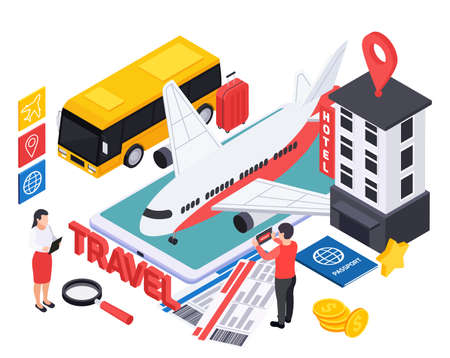1. The Pre-Pandemic Landscape of Trip Insurance
Before COVID-19, trip cancellation and interruption insurance was a straightforward safety net for US travelers. Most people bought travel insurance as an add-on to their flights, cruises, or vacation packages, giving them peace of mind in case something unexpected forced them to change their plans. But what exactly did these policies cover, and what didn’t they?
How Trip Cancellation and Interruption Insurance Worked
Trip insurance typically covered a limited list of “covered reasons”—specific situations that allowed you to cancel or cut your trip short and get reimbursed for non-refundable costs like flights or hotel bookings. These reasons were spelled out clearly in the policy documents. If your situation didn’t match one of the listed reasons, your claim was likely to be denied.
Common Covered Reasons (Pre-COVID)
| Covered Reason | Description |
|---|---|
| Serious illness or injury | If you, a travel companion, or immediate family member got sick or hurt before or during the trip. |
| Death | The passing of a traveler or close relative. |
| Jury duty or court subpoena | If you were required to appear in court unexpectedly. |
| Natural disasters at destination | Events like hurricanes or wildfires that made your destination uninhabitable. |
| Job loss | Losing your job after booking the trip (sometimes included). |
| Terrorist incidents at destination | An attack in your travel city shortly before arrival. |
Typical Exclusions (What Wasn’t Covered)
- Pre-existing medical conditions: Unless you purchased a waiver, claims related to pre-existing conditions were often denied.
- Change of mind: Deciding not to travel without a covered reason wasn’t eligible for reimbursement.
- Civil unrest or government travel advisories: Most policies did not cover cancellations due to political instability unless explicitly stated.
- Pandemics and epidemics: Outbreaks of disease were usually excluded from coverage—an important point that became very significant once COVID-19 emerged.
- Travel provider bankruptcy: Not all policies covered the collapse of airlines, cruise lines, or tour operators unless specified.
The Bottom Line Before COVID-19
The pre-pandemic world of trip insurance focused on protecting travelers from sudden personal emergencies and uncontrollable events. But it left out a lot of gray areas—especially global health crises—which many US travelers never thought they’d need until 2020 changed everything.
2. The Impact of COVID-19 on Travel Plans and Claims
The COVID-19 pandemic turned the travel world upside down almost overnight. Millions of Americans saw their vacations, business trips, and family reunions suddenly canceled or delayed. This led to an unprecedented surge in trip cancellation and interruption insurance claims as travelers scrambled to recover costs for flights, hotels, and tour packages they could no longer use.
Unprecedented Spike in Claims
Before 2020, most travel insurance claims in the US were due to personal emergencies like illness, injuries, or weather disruptions. But as countries started shutting borders and airlines grounded flights, insurers faced a tidal wave of COVID-related claims.
| Time Period | Main Reason for Claims | Volume of Claims |
|---|---|---|
| Pre-COVID (2019) | Medical emergencies, severe weather | Normal |
| Early Pandemic (Spring 2020) | Pandemic-related cancellations | Record-breaking high |
| Mid-to-Late 2020 | COVID illness/quarantine, border closures | Sustained high levels |
How Insurers Responded
With so many claims flooding in, insurance companies had to adjust quickly. At first, many policies did not cover pandemics at all—leaving customers frustrated when their claims were denied. Some insurers created special COVID-19 add-ons or clarified what their policies did and didnt cover. Others updated their terms to specifically exclude pandemic coverage going forward.
- Faster claim processing: To keep up with demand, some insurers streamlined their claims process or added digital options.
- Clearer communication: Companies posted FAQs and sent out updates to help travelers understand what was covered.
- Policy changes: Many new policies now specifically mention pandemics and public health emergencies—sometimes as exclusions, sometimes as limited coverage.
The Traveler’s Perspective: Rapidly Changing Rules
The situation was confusing for travelers. Airline schedules changed daily, countries updated entry requirements without notice, and local outbreaks could turn a “safe” destination into a hot spot overnight. This meant that even travelers with insurance weren’t always sure if they could get reimbursed.
- “Cancel For Any Reason” (CFAR) upgrades: Many Americans started looking for CFAR coverage because it offered more flexibility—even though it came at a higher price.
- Reading the fine print: Travelers learned the hard way that not all disruptions are covered by standard insurance plans.
- Demand for transparency: US consumers began expecting clearer explanations from both airlines and insurers about refund and claim processes.
The Ongoing Effects Today
The lessons learned during the pandemic have shaped how both travelers and insurance companies approach trip protection today. Awareness is higher than ever about what travel insurance covers—and what it doesn’t. Flexibility has become a top priority for American travelers planning future trips.

3. Evolving Coverage: Pandemic and Health-Related Clauses
The COVID-19 pandemic forced the travel insurance industry in the US to rethink and redesign how trip cancellation and interruption policies work. Before 2020, most Americans didn’t worry much about whether their insurance would cover a sudden global health emergency. Now, travelers want to know exactly what is covered when a new variant hits or if another public health crisis arises.
How Providers Have Updated Their Policies
Insurance companies quickly realized that traditional policies weren’t enough for these unpredictable times. Here’s what’s changed:
- Clearer Policy Language: Insurers now spell out what counts as a “covered reason” for canceling or interrupting a trip due to pandemics or epidemics.
- Pandemic-Specific Coverage: Many plans now include specific references to COVID-19, covering things like quarantine, positive tests, or denied boarding due to illness.
- Cancel for Any Reason (CFAR): This upgrade lets you cancel your trip for almost any reason—not just those listed in the basic policy. It became very popular as travelers wanted more flexibility.
- Medical Coverage Updates: Some policies now offer coverage if you get sick with COVID-19 while traveling, including medical care or evacuation costs.
What Does This Mean for US Travelers?
For American travelers, understanding these updates means fewer surprises if plans change unexpectedly. Here’s a quick breakdown of key features before and after the pandemic:
| Feature | Pre-COVID-19 | Post-COVID-19 |
|---|---|---|
| Pandemic/Epidemic Coverage | Rarely included | Often included, especially for COVID-19 |
| CFAR Option | Less common | Widely available (extra cost) |
| Quarantine/Denied Boarding Coverage | Not usually covered | Certain plans include this coverage now |
| Policy Language Clarity | General/ambiguous terms | Clear definitions about health-related cancellations |
| COVID-19 Medical Care Abroad | Seldom offered | Available in many policies today |
Choosing the Right Policy Today
If you’re planning a trip, it’s important to read the fine print. Look for:
- If COVID-19 is listed as a covered reason for cancellation or interruption.
- If the policy covers quarantine or denied boarding costs.
- The cost and rules around CFAR upgrades—these let you back out even if you simply change your mind.
- If emergency medical care related to COVID-19 is included during your trip.
Pandemic Preparedness is Now Part of Travel Planning
The bottom line: Insurance providers have listened to travelers’ concerns and have evolved their coverage. American travelers should take time to compare options, ask questions, and choose a plan that matches their comfort level in our new travel reality.
4. Best Practices for Travelers: What to Look for in Post-Pandemic Policies
Why Insurance Shopping Changed After COVID-19
The pandemic taught US travelers that plans can change quickly—and sometimes dramatically. Now, finding the right trip cancellation and interruption insurance means looking beyond basic coverage. Here’s how you can protect your travel investment in today’s world.
Key Features to Prioritize
Not all policies are created equal. Consider these features when comparing your options:
| Feature | Why It Matters |
|---|---|
| Flexible Cancellation | Look for “Cancel For Any Reason” (CFAR) coverage. This gives you more control if you need to back out due to personal or pandemic-related reasons. |
| Pandemic Coverage | Make sure the policy doesn’t exclude COVID-19 or future outbreaks from coverage for trip cancellations, interruptions, or medical care abroad. |
| Coverage Limits | Check how much you’ll be reimbursed for cancellations, delays, or medical expenses. Don’t just pick the cheapest plan—make sure limits match your trip value. |
| 24/7 Assistance Services | Emergencies don’t keep business hours. Reliable support can help with rebooking flights, finding local healthcare, or navigating quarantine rules. |
| No Exclusion for Government Advisories | If government warnings change suddenly, some policies may deny coverage. Choose one that still protects you if advisories shift after booking. |
How to Read the Fine Print
COVID-19 revealed that small details can have a big impact. Always:
- Review covered reasons for cancellation/interruption. Some only cover illness; others include job loss or border closures.
- Check for exclusions related to pandemics or epidemics.
- Understand documentation requirements. Know what proof you’ll need if you file a claim.
- Ask about coverage extension options. If you get stuck abroad due to quarantine, will your plan cover extra days?
Savvy Buying Tips for Today’s Travelers
Start Early, But Not Too Early
You usually need to buy insurance soon after your first trip payment, especially for CFAR coverage. But wait until your plans are somewhat set—changing dates later can complicate things.
Shop Around and Compare Quotes
Use comparison sites like Squaremouth or InsureMyTrip, but always cross-check with the insurer’s own website before purchasing. Prices and benefits can vary more than you think!
Add On What You Need—Skip What You Don’t
If you’re not checking bags, skip baggage loss coverage. If you’re renting a car, check if your credit card already covers it before buying add-ons.
Your Quick Checklist Before Buying:
- Does it cover COVID-19 and new variants?
- Are medical evacuation and emergency medical included?
- What are the claim filing steps and deadlines?
- If I need to cancel for personal reasons, is there CFAR?
- If my destination changes entry rules last minute, am I protected?
5. Looking Ahead: The Future of Trip Cancellation Insurance in the US
The travel world is still adjusting to the aftermath of COVID-19, and so is the insurance industry. As American travelers continue to deal with new uncertainties—from health risks to unpredictable weather—trip cancellation and interruption insurance is also evolving. Let’s take a look at how this type of coverage might change to better fit the needs of US travelers in the coming years.
More Flexible Coverage Options
One of the biggest lessons from the pandemic is that flexibility matters. More insurers are now offering policies that allow you to cancel for almost any reason (CFAR). This gives travelers peace of mind when booking expensive trips or dealing with changing personal situations. Expect more user-friendly policies, easier claims processes, and digital tools for managing your coverage on-the-go.
What Might Be Covered?
Insurance providers are likely to add or expand coverage for:
- Pandemic-related cancellations
- Health emergencies (including outbreaks)
- Government travel bans or sudden border closures
- Natural disasters or extreme weather
Comparison: Traditional vs. Evolving Coverage
| Feature | Traditional Policies | New/Evolving Policies |
|---|---|---|
| Pandemic Coverage | No/Very Limited | Often Included |
| Cancel For Any Reason (CFAR) | Rare/Expensive | More Common/Affordable |
| Claims Processing | Mainly Manual Paperwork | Online & Mobile Friendly |
Technology and Personalization
Travelers can expect smarter, more personalized insurance options thanks to technology. Apps will let you buy, update, or file claims from your phone. Some policies may use real-time data—like flight delays or weather alerts—to automatically adjust your coverage or start claims if something goes wrong during your trip.
The Role of Consumer Awareness
Americans are now more aware than ever about what their travel insurance actually covers. Providers will likely respond by making policy details clearer and easier to understand, helping people choose plans that really fit their needs instead of just picking the cheapest option.
What Should US Travelers Watch For?
- Policy exclusions (read the fine print!)
- The range of covered reasons for cancellation/interruption
- If CFAR is available—and at what cost
- If COVID-19 and other pandemics are included
The future of trip cancellation and interruption insurance in the US looks brighter—and much more traveler-friendly—than before. By keeping up with these trends, American travelers can make smarter choices and travel with greater confidence, no matter what comes next.


